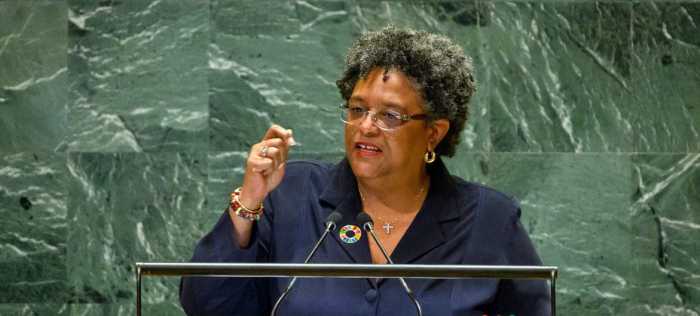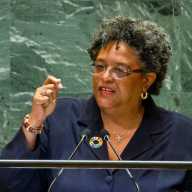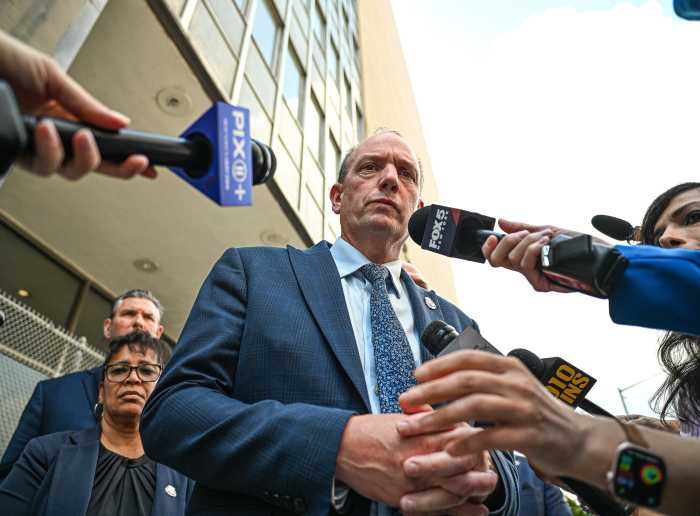PORT-DE-PAIX, Haiti (AP) — For some Haitians fearing new aftershocks, the best place to spend the night is under a tree.
The one-two punch of a magnitude 5.9 earthquake in northern Haiti on Saturday that destroyed houses and killed at least 12 people followed by a strong 5.2 magnitude aftershock on Sunday has residents worried about returning to their cracked cinderblock homes for fear they will collapse.
“I don’t feel safe even inside my house,” said Gary Joseph as he put various mattresses for himself and his two sons to sleep on under a tree outside the house in Port-de-Paix.
He pointed to cracks left by the quake and aftershock in a wall and said: “I have to protect myself and my sons.”
Sunday’s aftershock caused panic on streets where emergency teams were providing relief to victims of Saturday’s quake, which toppled cinderblock homes and rickety buildings in several cities.
The U.S. Geological Survey said the epicenter of the aftershock was located 9.8 miles (15.8 kilometers) north-northwest of Port-de-Paix, the city hard hit by Saturday’s earthquake.
Haiti’s civil protection agency said at least eight people died in the coastal city of Port-de-Paix and three people died in the nearby community of Gros-Morne in Artibonite province. Another person died in Saint-Louis du Nord, Communication Minister Eddy Jackson Alexis tweeted.
Among the dead from Saturday night’s quake were a five-year-old boy crushed by his collapsing house and a man killed in a falling auditorium. Authorities said 188 people were injured.
Impoverished Haiti, where many live in tenuous circumstances, is vulnerable to earthquakes and hurricanes. A vastly larger magnitude 7.1 quake damaged much of the capital in 2010 and killed an estimated 300,000 people.
“I feel like my life is not safe here,” said nun Maryse Alsaint, director of the San Gabriel National School in Gros-Morne, where several classrooms were severely damaged.
She said that about 500 students would not be able to return to school on Monday.
President Jovenel Moise urged people to donate blood and asked international aid agencies to coordinate with local agencies to avoid duplicated efforts. By Sunday evening the government didn’t provide an estimate of the damages.
The USGS said Saturday’s quake was centered 12 miles (19 kilometers) northwest of Port-de-Paix, which is about 136 miles (219 kilometers) from the capital of Port-au-Prince.
It was felt lightly in the capital, as well as in the neighboring Dominican Republic and in eastern Cuba, where no damage was reported.
In Haiti, officials have struggled to shore up buildings despite the two major fault lines along Hispaniola, which is the island shared with the Dominican Republic.
The damage from the temblors was visible. In Gros-Morne, one bed was covered in rubble, while the exterior walls of some homes were visibly cracked. Others tilted at precarious angles.
Pierre Jacques Baudre, a farmer and father of seven, said he was afraid to return to his home after one wall built with rocks and cement crumbled.
“The house can fall at any time,” he said.
The civil protection agency issued a statement saying that houses were destroyed in Port-de-Paix, Gros-Morne, Chansolme and Turtle Island.
Damage was also reported at the Saint-Michel church in Plaisance and the police station in Port-de-Paix. Parts of a hospital and an auditorium collapsed in Gros-Morne, where parliamentarian Alcide Audne told The Associated Press that two of the deaths occurred.

























